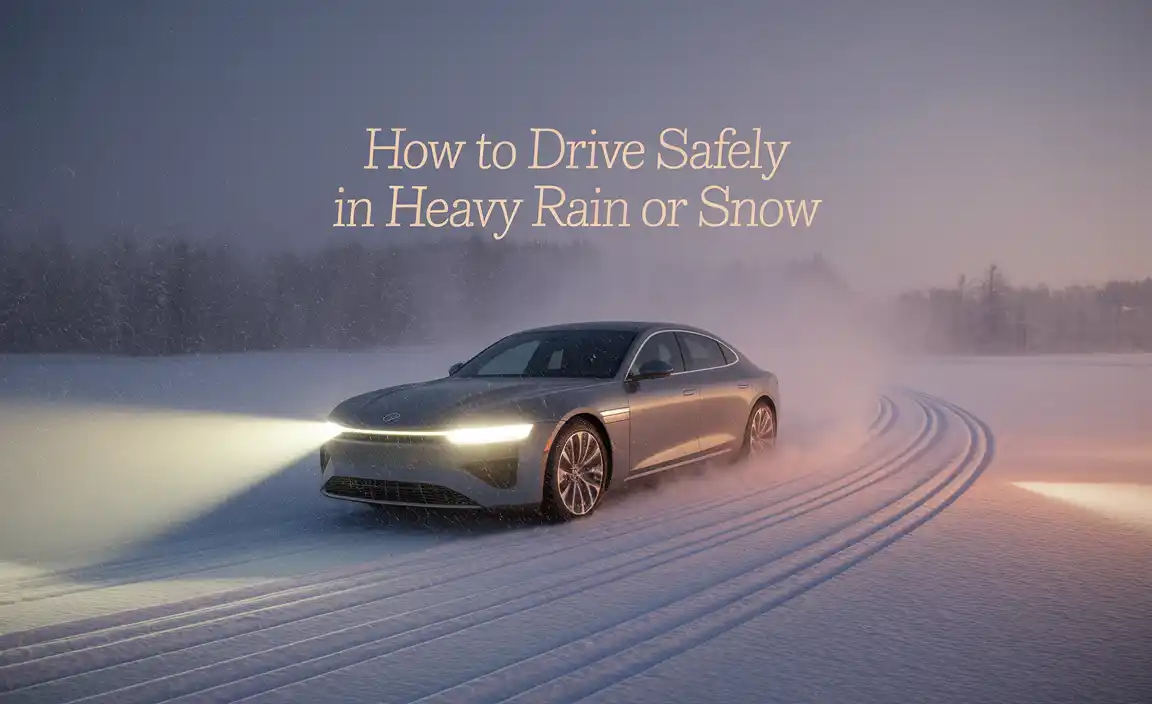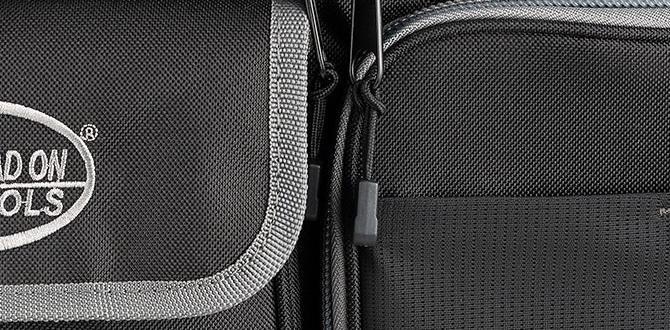Driving is a skill that requires constant practice and vigilance. You may need to take driving lessons if you have not driven for a long time or have yet to gain experience.
But the good news is that many people use self-driving cars, which will remove the need for you to drive. Driving in heavy rain or snow can be a nightmare, but it doesn’t have to be. From cleaning your car to knowing your roads, we’ve compiled a list of tips that will help you stay safe while driving in these conditions.
We will go over seven essential tips to ensure that you, your passengers, and other drivers on the road remain safe during a heavy storm. We will also outline common dangers you may encounter while driving in heavy rain or snow and share additional tips to remember when hitting the road in these conditions. So, buckle up and keep reading to learn how to drive safely during challenging weather conditions.

7 Essential Tips To Drive Safely In Heavy Rain Or Snow
Driving in heavy rain or snow is challenging and poses significant risks, especially during extreme weather conditions. As a driver, adhering to certain precautions to ensure your road safety is essential. Firstly, it is important to maintain an increased distance between vehicles while driving in heavy rain or snow to ensure there is enough time to stop. You should also reduce your speed by at least ten mph below the posted speed limit.
Another essential tip is to keep a bundle of cold-weather gear in the car for emergencies, like mittens, scarves, hats, a flashlight, and blankets. Moreover, you should ensure your tires are properly inflated and have enough tread for a better grip on the road. Lastly, do not rush to reach your destination when driving in heavy rain or snow, and allow for extra time for travel to ensure a safe and stress-free drive.
1.Drive A Clean Car In Good Condition
To ensure safe driving in heavy rain or snow, ensure your car is in good condition, with properly functioning headlights, windshield wipers, and brakes. Also, keep the windshield and windows clean and free of dirt and debris for better visibility during stormy weather.
Driving a safe and clean car during heavy rain or snow is important. If your car is not in good condition, you might be tempted to speed up to avoid the water on the road. But doing so will only increase the chances of getting into an accident.
Also, driving slowly in wet conditions increases the risk of hydroplaning. A fast-moving car with little traction on the road can easily cause a serious accident. So be extra cautious when driving in heavy rain or snow, and ensure your vehicle is in good condition before heading out.
2.Know The Roads
Knowing the road conditions is essential to driving safely in heavy rain or snow. Check weather reports and road conditions before getting on the road. Additionally, ensure your vehicle is properly equipped for winter weather with tires with good tread and a full gas tank.
Once on the road, slow down and increase your following distance to provide extra time for braking in case of sudden stops. An emergency kit of food, water, blankets, and other necessary items in your car is also essential. It is also important to avoid driving in dense fog if possible, and if you must do so, drive with caution and reduce your speed accordingly. These tips help ensure your safety when driving in heavy rain or snow.
3.Switch On Lights, Not Brights
When driving in heavy rain or snow, it’s important to switch on your headlights but not your brights. The bright lights reflect off the droplets or snowflakes in the air, which can cause glare and reduce visibility.
Regular low-beam headlights are sufficient for driving in such conditions. Also, ensure your taillights work so other drivers can see you from behind. Remember to signal early and use your hazard lights if necessary.
4.Slow Down
Driving in heavy rain or snow can be dangerous, but there are several tips you can follow to ensure your safety on the road. One of the most important tips is to slow down to 35 MPH or less. This will allow you to maintain control of your vehicle and reduce the risk of accidents.
Other essential tips include turning on your headlights and wipers, keeping a safe distance from other vehicles, avoiding sudden braking or sharp turns, and looking where you want to go while easing your foot off the accelerator to prevent skidding.
5.Don’t Get In Too Deep
Avoiding standing water or deep snow is important when driving in heavy rain or snow. This can cause your vehicle to hydroplane or get stuck.
Instead, try to find alternate routes or wait until the conditions improve. If you have no choice, drive slowly and carefully, and avoid sudden movements that can cause you to lose traction. Safety should always be your top priority when driving in inclement weather.
6.Steer Where You Want To Go
In snowy or rainy conditions, it’s important to practice smooth and gentle steering. Instead of fighting the skid, steer in the direction that you want to go.
Avoid jerky movements and sudden turns, which can cause your vehicle to spin out of control. Stay calm and focused, and maintain a safe speed and distance from other vehicles. With these tips, you can drive safely in heavy rain or snow.
7.Hold Off On Unnecessary Trips
If the weather conditions are particularly severe, it’s best to avoid unnecessary trips altogether. If you can, wait until the conditions improve before getting behind the wheel. Whether you have to go out, ensure you are well-prepared with emergency supplies and a charged phone in any unexpected situations. Your safety should always come first.
What Makes Driving In Heavy Rain Or Snow Dangerous?
Driving in heavy rain or snow can be dangerous and increase the risk of accidents. Drivers should be extra cautious in poor weather conditions to avoid potential disasters. There is a high risk of losing vehicle control during wind and rainstorms. Limited visibility on slippery roads can make it challenging to drive safely. Poor tire traction and tread on wet roads can cause vehicles to skid or hydroplane, which can be dangerous for the driver and other drivers.
If drivers must travel in snowy or rainy conditions, they should keep a bundle of cold-weather gear in their cars, such as extra food and water, warm clothing, a flashlight, and more to ensure their safety in case of an emergency. It’s also essential to avoid driving through the water as this can cause significant damage to a vehicle’s engine and electrical systems. Drivers should remain vigilant and cautious while driving in heavy rain or snow.
Tips For Driving Safely In Heavy Rain Or Snow
Driving in heavy rain or snow can be challenging for even the most experienced drivers. However, with a few precautions, it can be done safely. Ensure your tires are properly inflated and have adequate tread to grip the road. Keep a bundle of emergency gear in your car, such as extra food and water, warm clothing, a flashlight, a glass scraper, blankets, medications, etc.
Monitoring the condition of your windshield wipers is also essential. Old or worn-out wipers can reduce visibility which can cause a severe accident. Finally, exercise caution and maintain a safe speed while driving in difficult weather conditions. Avoid warming up a vehicle in an enclosed area, such as a garage, as it can harm your health. These simple steps allow you to stay safe while driving in heavy rain or snow.
How To Handle A Skid In Heavy Rain Or Snow
Handling a skid in heavy rain or snow can be a nightmare for drivers, but you can take a few steps to mitigate the risk. First, keep your speed below 50 mph and maintain proper braking distance to stop safely if the skid occurs. Next, stay calm and don’t panic. Pull over, turn off the engine, and let it cool down if needed.
Once it is safe to drive again, try reducing your speed and using greater braking force. Lastly, avoid accelerating back into the skid since this can cause even more damage to your vehicle. Understanding how a skid happens and how to prevent it will help keep you and other drivers safe.
Conclusion
Driving in heavy rain or snow can be incredibly dangerous. Adverse weather can cause skidding, and sliding and impair visibility, making it tough for even the most experienced drivers. Remember, the most important thing is your safety and that of your passengers.
Follow the seven tips for safe driving in adverse weather, including slowing down, knowing the roads, and driving a clean car in good condition. Being aware of the potential risks and using common sense when driving in these weather conditions will ensure you reach your destination without any untoward incidents. For more tips on how to drive safely in heavy rain or snow, read our comprehensive guide.
Frequently Asked Questions
[rank_math_rich_snippet id=”s-4097555f-55b7-4f26-97a5-3ebcbf6916b4″]







